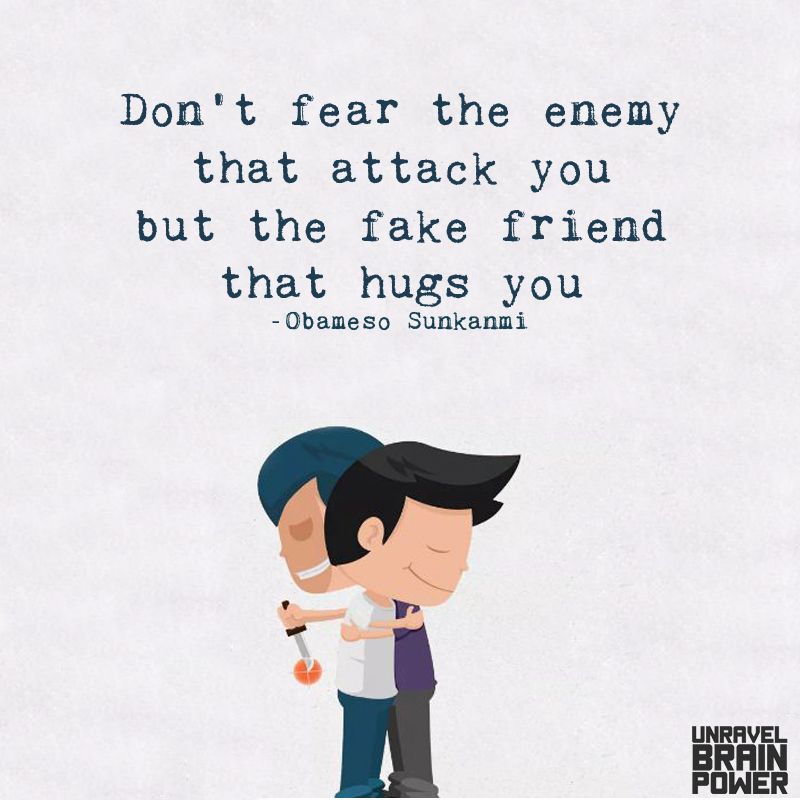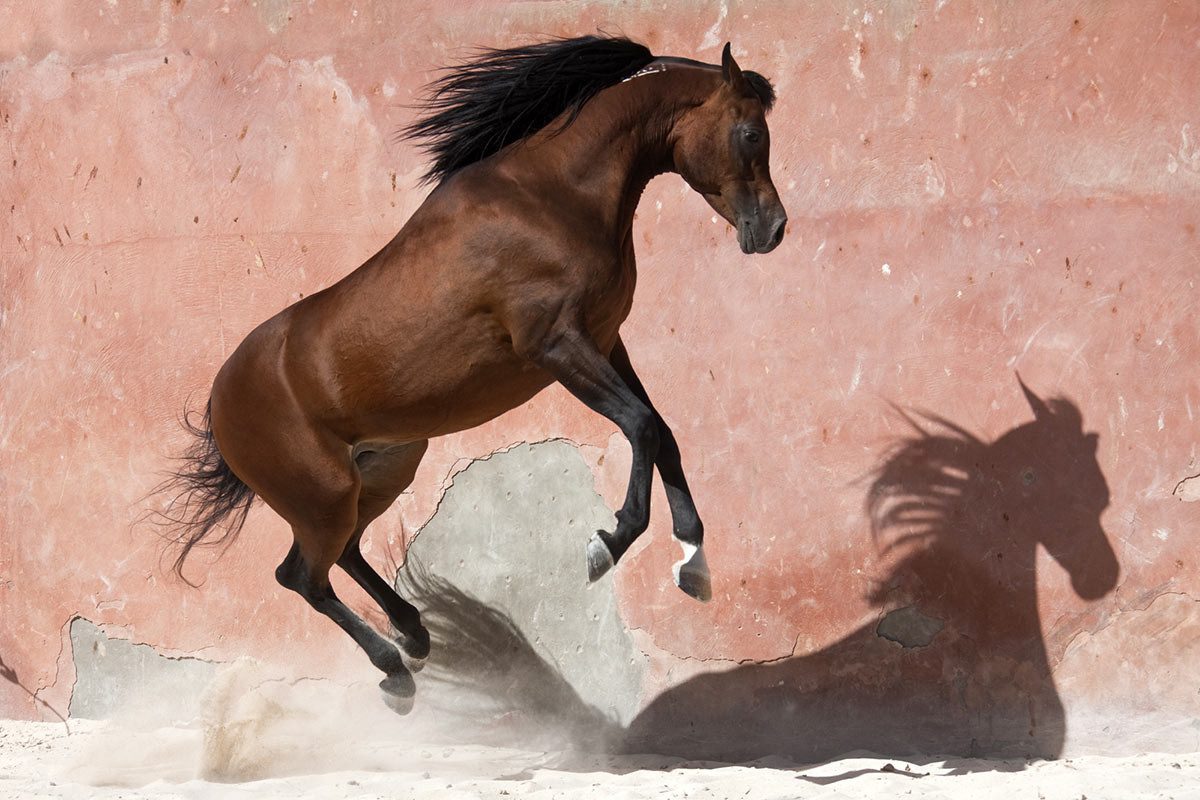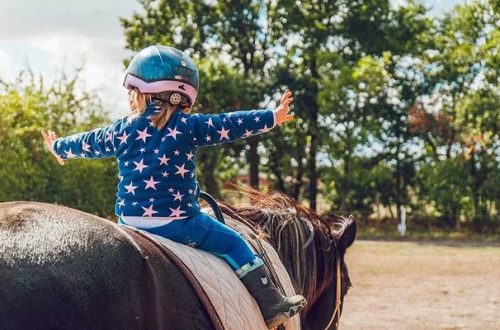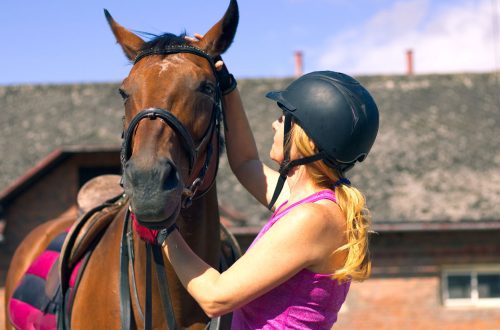
Fear: enemy or friend?
Horses are unique creatures. Their beauty, grace and intelligence do not leave indifferent many people on the planet. But there is something else: if a person is 80% water, then a horse is made of fear.
In the wild, our four-legged friends had a hard time, because they were constantly hunted by predators. It was fear that helped them survive in those difficult times.

Photo: Christiane Slawik
It’s no secret that a horse is a herd animal. Everyone knows about it almost from childhood. But what does this mean?
The horse does not have individual thinking. For more than 60 million years, this animal has been surviving and evolving due to natural and learned instincts, emotions in the moment, as well as group (herd) decisions.
The strongest emotion in the moment is fear. It is triggered by the reptilian brain, the oldest part of the entire brain. That’s why, despite the fact that our horses are no longer threatened by predators, their instincts work in exactly the same way as they did several million years ago. And if you learn to understand them, you will be able to treat your partner and friend with more condescension.
3 stages of fear
The emotion of fear in a horse for the entire existence of the species on the planet has acquired a clear structure, thanks to which we can track the slightest changes in the behavior of the animal and influence them.
When a horse is afraid, it goes through 3 stages:
Freezing
The horse experiences a slight fright, alertness. At this moment, she sharply raises her head and begins to stare into the distance. This reaction helps your partner to correctly assess the potential danger and make the right decision: either return to the last action performed, or run.
Freezing can happen at absolutely any time, such as when a horse is grazing, or when it enters a barrier. Therefore, refusals are not always associated with the unwillingness of the horse to jump. She can just look at a crookedly drawn pattern at the last moment and get scared of it.
Escape
If the horse has realized that something threatens its life, after freezing, the flight stage is launched. It can be activated immediately in the case of an “experienced” horse or a very strong stimulus / stimulus. This condition is dangerous because when the horse breaks into a stampede, it does not quite understand where it is running.
In the equestrian routine, we encounter this reaction much more often than we might imagine. For example, when during the warm-up the horse starts lunging for no reason. She does not understand that she is moving in a vicious circle. Her instincts tell her to run.
Sometimes the flight reaction can be seen in jumping training if the horse “rushes” into the barrier. Of course, the reasons for individual animals may vary, but nevertheless, often the rapid acceleration during approaching an obstacle is due to fear of the barrier itself, the rider, or some object / phenomenon on the training ground. In this way the horse is trying to get rid of the threat: I will quickly jump over and it will all be over.
Aggression
If the flight does not help, the stage of aggression turns on, the so-called “fight-and-flight” reaction. When “run” doesn’t help, the horse attacks. This is not a natural reaction for her, because in the wild the horse has never been an aggressor. Therefore, if she began to attack, in most cases this means that the horse is in great fear and is trying to protect herself, resources, offspring or family.
In the minority, attacks of aggression, not for the sake of protection, do occur in some domestic individuals, but here we are talking about learned behavior, that is, what a person fixed in specific conditions.
 Photo: Prokoni.ru editors
Photo: Prokoni.ru editors
The language of fear
Although horses cannot speak, they have amazing body language. Knowing how to read it can prevent a large number of negative reactions from the horse, which lead to injury in humans.
Fear is a very strong emotion, even at the stages of its inception. Therefore, understanding the body language of a horse during fear is not as difficult as it seems.
- Head
During freezing, the horse raises its head high up to increase visibility. She will direct her ears towards the frightened object and try to turn her whole body towards him. The eyes and nostrils are wide open and the breathing will be deep and noisy to receive more information.
Even if the horse does not have the opportunity to “freeze”, you can determine its fear by its ears: where the horse’s ears are directed, its attention is directed there.
- Body
There will be obvious tension in the body, due to which the animal may even begin to tremble. The back will be arched. You may get the impression that the horse is preparing “to start”, and this is true. The moment of freezing precedes the flight, so the horse must be all “in good shape” in order to be able to quickly break loose and run.
- Vocalization
The very first signal, a warning of danger, is a snort. The horse can calmly walk, graze, engage with you, but suddenly start to snort sharply. Along with this, you will see the movement of the ears towards the frightened object. This signal is rooted in the herd lifestyle. Horses thus warned their relatives about the existence of any danger at a given time.
You may also have noticed how horses begin to neigh loudly when, for example, they are left alone in the levada. This, too, is a fear response that will indicate “separation anxiety” and “distance anxiety.”
Separation anxiety is literally the fear of getting lost. Left alone in the paddock, the horse will actively run and neigh loudly, thus reporting its location to other individuals, and also asking where they are.
You may experience “distance anxiety” if you take your horse away from a familiar place, such as in a field. Even if you are in the company of other animals, your four-legged partner may feel in danger. His neighing will demonstrate a desire to quickly get to a safe place.
All these actions can also be accompanied by sharp inhalations, exhalations, snoring, snorting, which contributes to a more thorough analysis of odors.
- Tail
During the flight (and not only) the horse will be pulled up.
With paralyzing fear, the animal, on the contrary, will turn its tail as far as possible. Such a reaction can be seen before mating or hitting.
- defecation
The last and one of the most striking signs of severe stress is defecation. In the wild, when attacked by a predator, a horse needed to “drop the ballast” to make it easier to run.
Such a simple phenomenon as fear turned out to be a “carte blanche” from nature and evolution, which helped the horse survive to this day. And she still uses it to this day! And then there’s little…
Who knows what a plastic bag wants from her, islands of asphalt peeking out from under the snow, or partridges in the fields abruptly flying out from under her feet.
The article was prepared on the basis of the materials of the equine behavior consultant Irina Zorina





